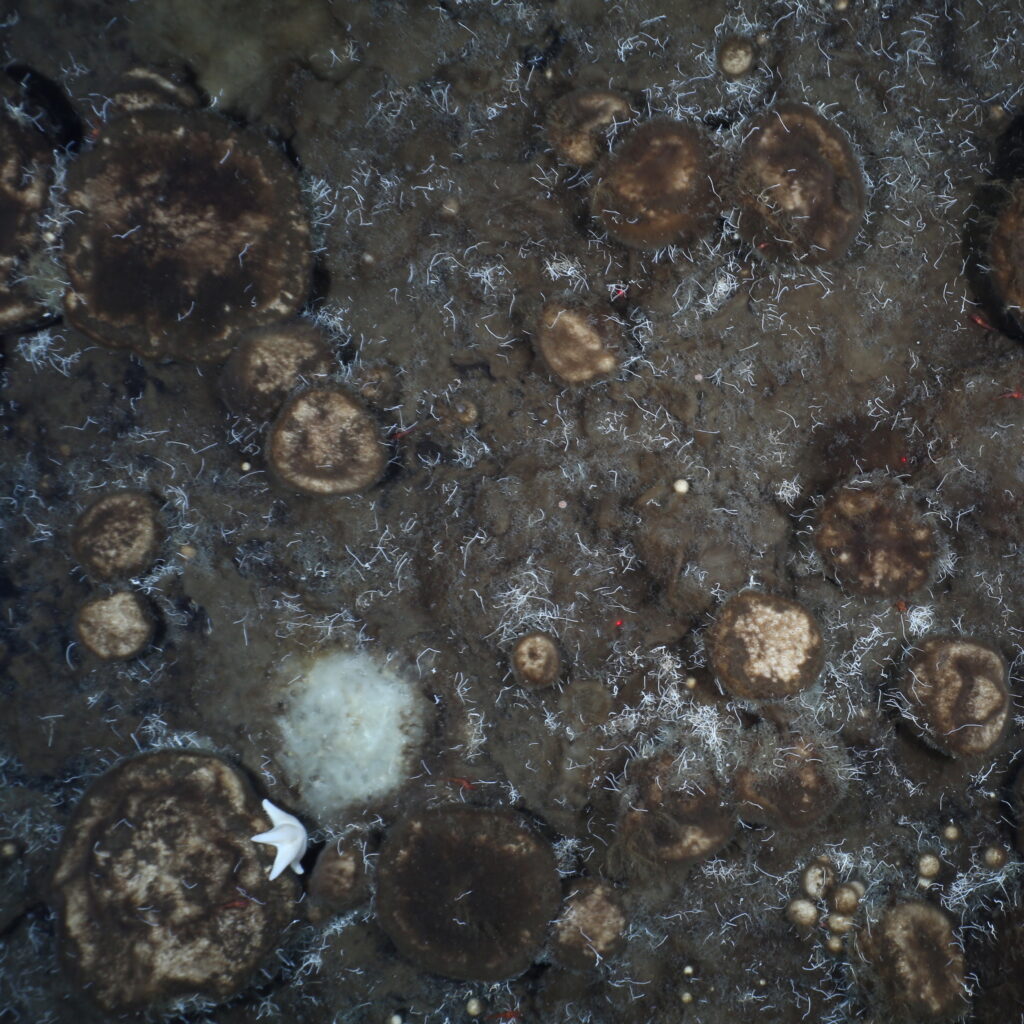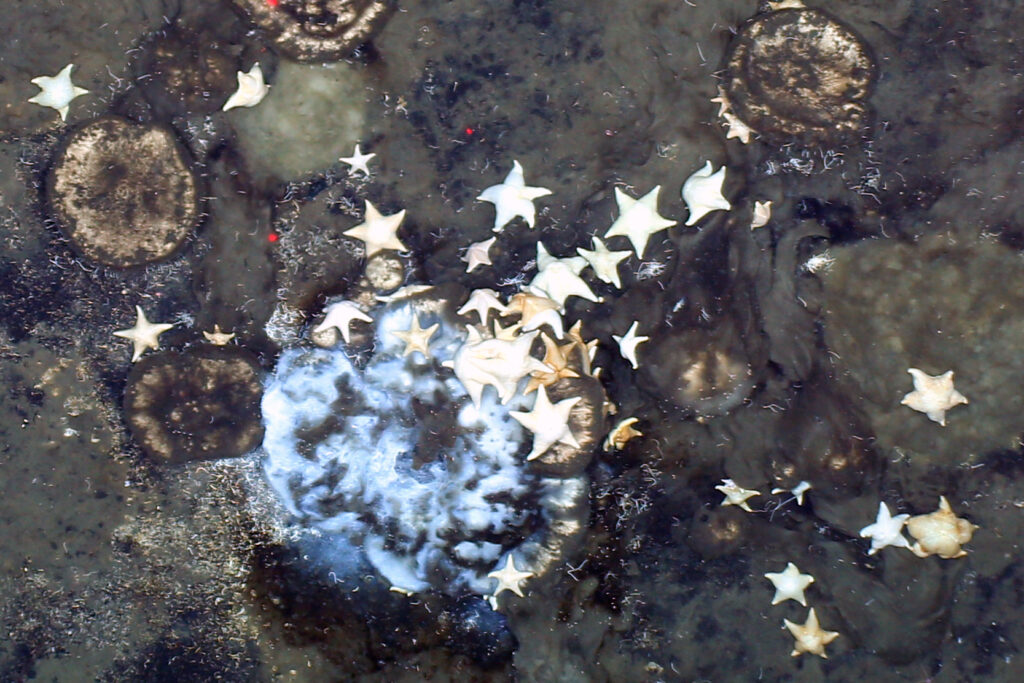The winner of the “Outstanding Paper” in Deep-Sea Biology Research for 2023 is:
Morganti, T.M., Slaby, B.M., de Kluijver, A., Busch, K., Hentschel, U., Middelburg, J.J., Grotheer, H., Mollenhauer, G., Dannheim, J., Rapp, H.T. and Purser, A., Boetius, A. 2022. Giant sponge grounds of Central Arctic seamounts are associated with extinct seep life. Nature communications, 13(1), p.638.
DOI: https://doi.org/10.1038/s41467-022-28129-7
ABSTRACT
The central Arctic deep sea belongs to the least studies ocean regions on Earth as it is so far covered with sea ice year round. Due to the rapid climate change and sea ice retreat in the Arctic, many questions arise as to the distribution and composition of its marine life, which comprises a large proportion of endemic species. During the Polarstern PS101 expedition to the Central Arctic, we discovered dense sponge gardens covering a chain of three fully ice-covered giant seamounts extending from >4000 to 5000 m water depth. The observed bacteriosponges produce dense mats of siliceous spicules, and sponge individuals were observed to sit on a layer of empty tubes composed by protein and chitin matter, apparently remnants of past seep biomass. To the best of our knowledge, this unique sponge landscape represents the densest accumulation of sponges known from Northern seas and a biodiversity hotspot in the Arctic Ocean with many species including octocorals previously not known to occur in this region. As it is such an oligotrophic ocean region, we focused on the question as to food supplies and the role of the sponge microbial symbionts. We combined stable bulk and compound specific isotope analysis together with radiocarbon ∆14C to infer food and energy sources consumed by this community. In addition, microbiome analysis was used to investigate the role that microbial symbionts play in host metabolism. All together our data suggest that this unique bacteriosponge community depends on specific symbionts using a variety of recalcitrant sources of organic matter for nutrition such as the remnants of former seep biomass and detritus material trapped in the dense spicule mat.



